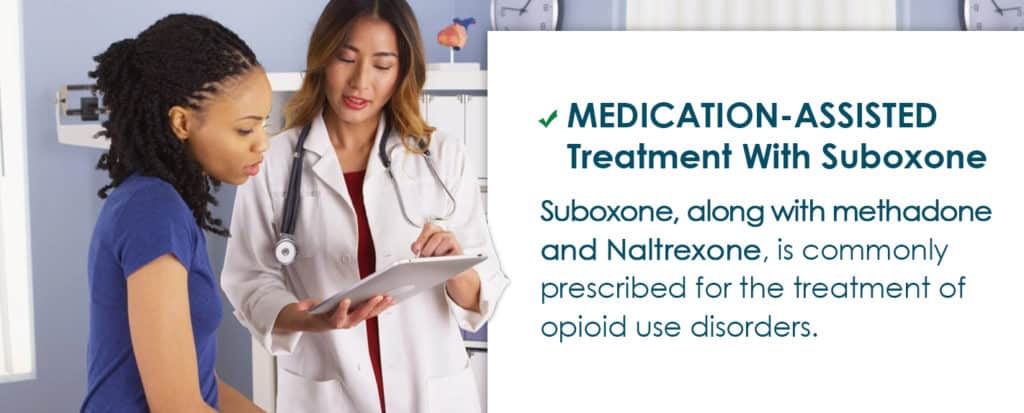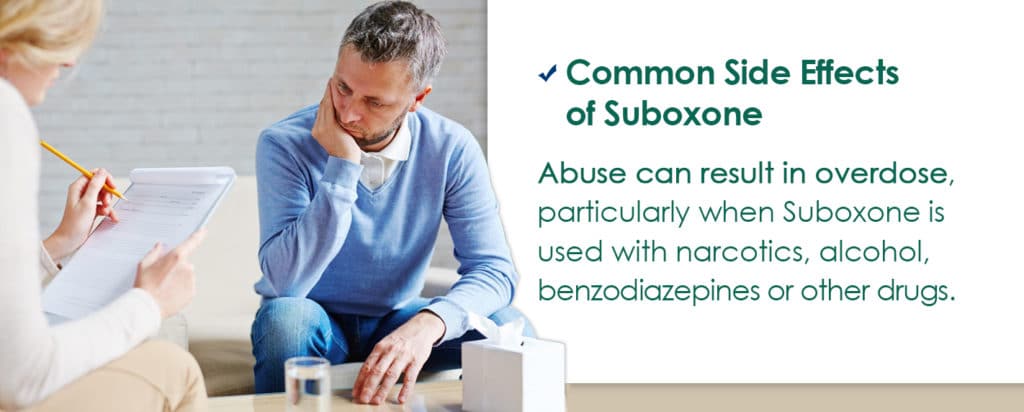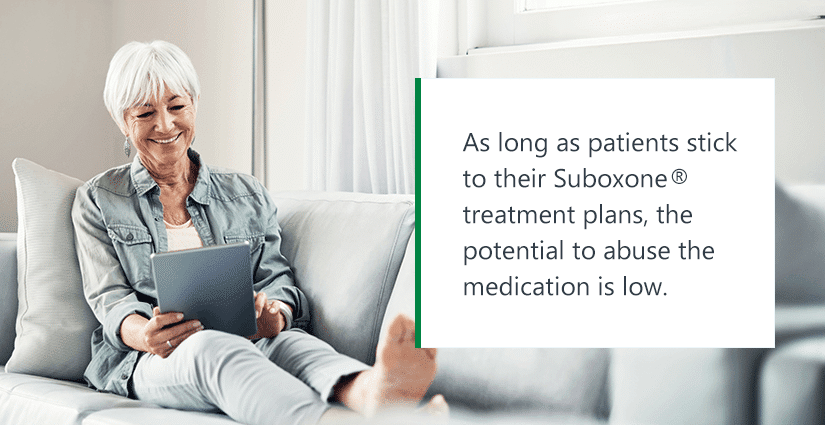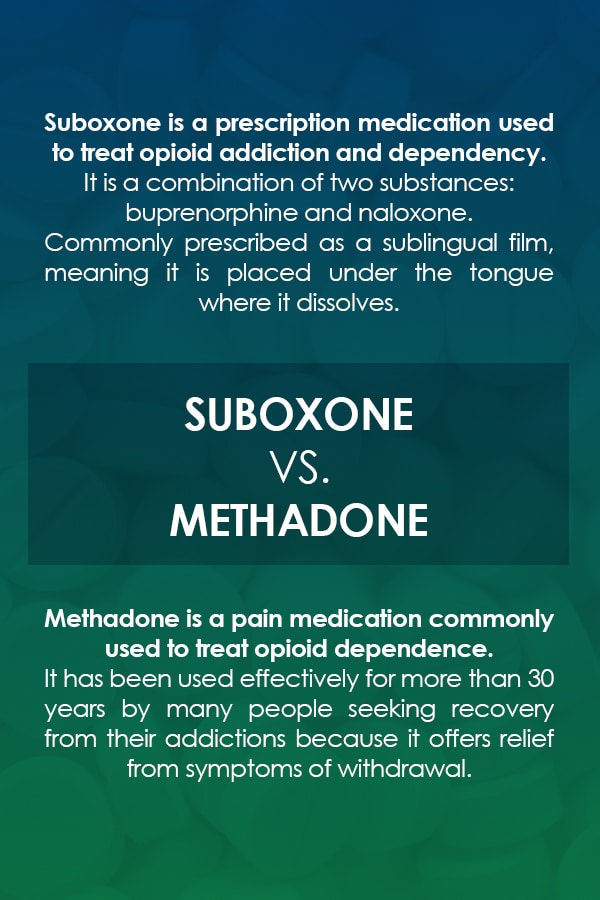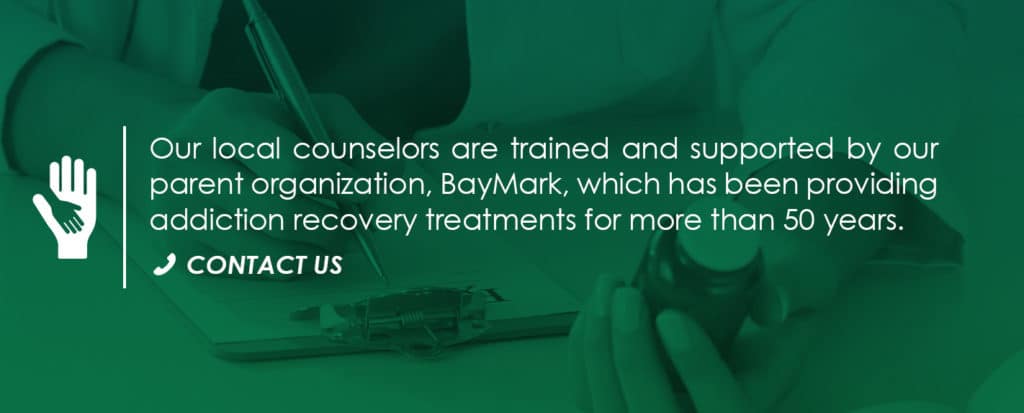Opioid use disorder is an ever-growing issue, the effects of which are widespread. Virtually no community or demographic has been spared of the consequences of prescription drug misuse, which is the primary cause of the opioid epidemic in the U.S.
In 2017, the federal Substance Abuse and Mental Health Services Administration’s (SAMHSA) National Survey on Drug Use and Health found that 30.5 million people, or 11.2 percent of Americans, reported they had used illicit drugs in the past 30 days. Of those, 3.2 million reported misusing pain medication, and an estimated 2.1 million people have an opioid use disorder.
Of those individuals struggling with opioid dependence and addiction, the U.S. Surgeon General reported in 2016 that only about 10% will receive proper treatment for their disorder. He credited that small number partly to the way addiction is viewed in this country — as a moral failure — when it should be confronted for what it is — a chronic illness that requires skill and compassion to treat.
Many patients find success in overcoming their opioid addiction and dependence through medication-assisted treatment (MAT). MAT is a combination of FDA-approved medications and behavioral therapy to treat addiction. MAT with Suboxone® is an effective method of treating opioid use disorder and should be considered when patients are seeking treatment.
Though patients may never be cured of their addiction, with effective treatment, functional recovery and a return to a normal life are possible. Continue reading to let us tell you all you need to know about Suboxone®.
The following is a list of topics discussed in the article. Click on a section to learn more:
- What Is Suboxone®?
- Medication-Assisted Treatment With Suboxone®
- How Can Patients Benefit From Suboxone®?
- How Do Suboxone® Treatment Clinics Work?
- What Does a Typical Suboxone® Treatment Plan Look Like?
- How Long Does Suboxone® Stay in Your System?
- Common Side Effects of Suboxone®
- Can You Get High on Suboxone®?
- Suboxone® vs. Methadone: What’s the Difference?
- Opioid Addiction Treatment Using Suboxone® Therapy
- Seek Treatment With Health Care Resource Centers
What Is Suboxone®?
Suboxone® is a prescription medication used to treat opioid addiction and dependency. It is a combination of buprenorphine and naloxone, two substances that can treat opioid use disorder and reverse an overdose.
As a partial opioid agonist, Buprenorphine activates the opioid receptors in the brain. However, unlike full agonists, these effects plateau, which is known as a “ceiling effect.” An increased dose will not create increased effects, or a greater high or relief, for the patient. Though it is itself an opioid, this ceiling effect allows patients dependent on opioids to discontinue the use of their dependent drug without experiencing the symptoms of withdrawal.
Naloxone belongs to the class of drugs known as opioid antagonists, which means it binds to the brain’s opioid receptors preventing opioids themselves from taking hold and stopping the intoxicating flood of dopamine that is the hallmark of opioid drug abuse. Naloxone is the primary ingredient of the drug Narcan®, which is administered to revive patients experiencing an opioid overdose.
Suboxone® contains four parts buprenorphine and one part naloxone. Naloxone is used not only to curb narcotic effects but also to prevent abuse, as using Suboxone® in ways other than prescribed can cause immediate symptoms of narcotics withdrawal.
Suboxone® is most commonly prescribed as a sublingual film, meaning it is placed under the tongue or inside the cheek where it dissolves. Suboxone® film comes in four dosage strengths.
Medication-Assisted Treatment With Suboxone®
Most users cannot just turn their back on their opioid addiction. They must alter their thoughts, actions and environments to overcome their dependency. However, quitting “cold turkey” is not effective for the majority of patients and can result in dangerous outcomes.
In many cases, MAT is an appropriate option for overcoming addiction. MAT is part of a whole-patient approach to addressing substance use disorders, as described by the SAMHSA. Suboxone®, along with methadone and Naltrexone®, are commonly prescribed for the treatment of opioid use disorders.
The main criticism regarding MAT is the idea that opioid users are merely replacing one drug with another. Though on its face, this idea is true: Opioid use disorder inhibits an individual’s ability to function normally in society. Thus, MAT is a good treatment option because it allows patients to receive medication in a safe and controlled environment.
The combination of buprenorphine and naloxone in Suboxone® eliminates physical cravings and withdrawal symptoms of opioid dependence, which allows patients to get back to a normal state of mind and undergo counseling to address the underlying causes of their addictive behaviors.
How Can Patients Benefit From Suboxone® Treatment?
Suboxone® treatment has more flexibility than other alternatives. Some programs are more structured with daily office visits, while Suboxone® through prescription treatment plans allows patients to administer the drug themselves at home.
Suboxone® alleviates withdrawal symptoms as substance use counseling helps treat the underlying issues to help you recover. Therefore, you can continue to handle your other responsibilities while you work towards improving your health.
How Do Suboxone® Clinics Work?
Most Suboxone® clinics treat individuals who misuse opioids that are over the age of 18 and can provide evidence of their substance overuse. If an individual is eligible for Suboxone® treatment, they will be scheduled for an intake appointment to complete a comprehensive assessment. An intake counselor will gather the patient’s social and substance use history followed by a screening and physical examination from a nurse practitioner.
Once this information is collected, the patient will receive an orientation about Suboxone® treatment policies and procedures including a discussion about fees and payments. The associated costs may be covered by the patient’s insurance.
What Does a Typical Suboxone® Treatment Plan Look Like?
Before starting MAT with Suboxone®, it’s important to understand what a typical Suboxone® treatment plan looks like. Be sure to take certain considerations into account when deciding if this type of treatment is right for you, such as:
- When was the last time you used?
- What type of opioid do you use?
- What is your level of opioid dependence?
The type of opioid you use is particularly important. Long-acting opioids, like fentanyl or methadone, require that patients slowly lower their dose and begin to wean themselves off before treatment can begin. With short-acting opioids, like heroin, Suboxone® treatment can begin as soon as 12 hours after the patient has stopped using. No matter the substance, Suboxone® treatment can only begin once moderate signs of withdrawal appear.
Suboxone® treatment occurs in four phases:
- Intake Phase: The patient will undergo an intake assessment, which includes a medical and psychosocial evaluation. It’ll be safe to begin treatment once the patient has abstained from using opioids for 12 to 24 hours and is in the early stages of opioid withdrawal. They’ll take a blood test and urine drug screen to verify before medication is administered.
- Induction Phase: During the induction phase, the doctor will work with the patient to find a comfortable dose that relieves symptoms of withdrawal and drug cravings. Dosage will be increased until the intended results are achieved.
- Stabilization Phase: Once the correct dose is discovered, the stabilization phase begins. During this phase, the patient begins to examine the underlying cause of their addiction without worrying about the physical symptoms of dependency. Patients begin counseling and receive support services. Many patients are able to stop abusing illicit opiates during this phase.
- Maintenance Phase: When a patient can maintain their treatment, they begin the maintenance phase. They continue to take the correct dose of Suboxone® as directed by their physician. They can begin to regain the lifestyle they had before their addiction started with a support system in place.
How Long Does Suboxone® Stay in Your System?
The factor that determines how long a drug stays in your system is its half-life. Half-life refers to how long it takes for half of a single dose of substance to leave the body. The half-life of buprenorphine is approximately 37 hours. However, each halving of the metabolite takes an additional 37 hours, so in total, it can take from 9 to 14 days for Suboxone® to fully clear the system after the last dose is administered.
Naloxone, on the other hand, has a very short half-life of 30 to 60 minutes.
Not everyone is the same, and certain variables will influence the body’s ability to metabolize Suboxone®. These factors include:
- Age
- Weight
- Body mass
- Height
- Genetics
- Liver function
- Dosage
- Frequency of use
- Co-ingestion of other drugs
Some drug tests can detect Suboxone®. However, standard drug screenings do not test for the elements found in Suboxone®. Only more advanced testing that specifically screens for buprenorphine will detect Suboxone®.
Users do not need to worry about showing a false positive for opioids when using Suboxone®. Buprenorphine metabolizes into norbuprenorphine in the body, not into morphine as illicit opioids do, meaning it won’t show on a test unless it’s specifically tested for.
Buprenorphine can be detected in urine within 40 minutes of ingestion and can remain detectable for several weeks. It is also detectable in hair, blood and saliva tests.
Common Side Effects of Suboxone®
Though no drug is without side effects, those associated with Suboxone® are generally milder than opioid full agonists and reduced when taken as prescribed with a doctor’s supervision. However, some serious side effects can occur.
Common side effects of Suboxone® include:
- Dizziness or blurred vision
- Drowsiness and trouble concentrating
- Tongue pain and numbness inside the mouth
- Nausea, vomiting and constipation
- Numbness or tingling
- Headache
- Back pain
- Increased sweating
- Insomnia
More severe side effects can occur, too. Seek medical help if you experience any of the following symptoms while on Suboxone®:
- Fainting
- Fast or irregular heartbeat
- Severe dizziness
- Mood changes
- Agitation, confusion or hallucinations
- Shallow or weak breathing or feeling faint
- Loss of coordination or extreme weakness
- Blurred vision
- Slurred speech
- Difficulty waking up
Long-term use of opioids, including Suboxone®, can affect fertility in both men and women. Allergic reactions are possible and include anaphylaxis, which can be severe and even life-threatening. Other symptoms of an allergic reaction include a skin rash or hives, trouble breathing and swelling of the lips, tongue and throat.
People who use Suboxone® or other opiates can experience hormone problems due to adrenal insufficiency, though this is rare. It can also cause damage to the liver, particularly in patients with existing liver conditions.
Suboxone® can be addictive and has the potential to be abused and misused. Like any opioid, there is a possibility of patients developing a physical or psychological dependence. Abuse can result in overdose, particularly when Suboxone® is used with narcotics, alcohol, benzodiazepines or other drugs.
Abruptly discontinuing use of the drug can cause mild withdrawal symptoms, such as nausea, headache and muscle aches.
Can You Get High on Suboxone®?
To the average user of Suboxone® who takes the drug as prescribed, it does not result in the euphoric high associated with opioid use. However, the longer the drug is used the more likely it is for the patient to experience a mild Suboxone® high, particularly after other opioids have left their system.
However, because buprenorphine is an opioid partial agonist, users will eventually reach its ceiling, meaning taking more of the drug will not result in a greater high. Some users will instead begin to misuse buprenorphine by dissolving and then injecting it, which results in a more intense high. If this is done with Suboxone®, or another branded product that combines buprenorphine and naloxone, the individual will experience immediate withdrawal symptoms from the naloxone.
As long as the person is on Suboxone®, they won’t experience withdrawal or opioid cravings. However, they may need to stay on Suboxone® for extended periods. As long as patients stick to their Suboxone® treatment plans, the potential to misuse the medication is low.
Suboxone® vs. Methadone: What’s the Difference?
If you’re thinking, “I need Suboxone®,” it’s first important to know the differences between it and other similar medications.
When it comes to either Suboxone® or Methadone for opioid addiction, methadone is likely the medication you’ve heard of. Methadone is a pain medication commonly used to treat opioid dependence. It has been used effectively for more than 50 years by many people seeking recovery from their addictions because it offers relief from symptoms of withdrawal.
Unlike Suboxone®, methadone is a full agonist opioid, meaning it activates the brain’s opioid receptors to the same extent as illicit and prescription opiates, leaving the patient vulnerable to developing dependence. And unlike other forms of opiates, methadone has a long half-life, so it stays in the body longer. According to the DEA, methadone is a Schedule II substance, which means it is a medically accepted drug with the high potential of abuse that can lead to psychological and physical dependence.
Side effects of methadone include:
- Gastrointestinal issues, including nausea, vomiting and diarrhea
- Muscle tremors
- Hallucinations
- Seizures
- Impotence, or sexual problems such as reduced sexual desire
- Drowsiness
- Depressed respiratory function
- Irregular heartbeat
Methadone can only be dispensed at specialized clinics by authorized medical professionals. The drug is administered once a day, meaning patients typically must visit a methadone clinic daily to receive treatment. Once they meet certain state and federal requirements, patients undergoing methadone treatment may be authorized to take their medicine home, forgoing daily visits.
Buprenorphine or Suboxone® can also be administered daily in an MAT program. This may be a good alternative for patients in need of structure that a medical provider believes may do better on Suboxone® than methadone.
MAT with Suboxone® by prescription is an alternative to daily visits to an MAT program. Because of its ceiling effect, it has a lower potential for abuse and a lower instance of fatal overdose than methadone. Like methadone, buprenorphine and Suboxone® are only available by prescription from doctors who have been authorized by the federal government to distribute it.
Patients receiving Suboxone® by prescription do not require daily office visits to obtain their medication. Instead, a medical professional prescribes the medication, and the patient fills the prescription through their pharmacy and administers the drug themselves at home.
Another difference between Suboxone® and methadone is the addition of naloxone as an abuse-deterrent. When taken as directed, naloxone does not affect the patient. But when misused, it can cause instant withdrawal symptoms. This provides the patient with an incentive to only use Suboxone® as part of an MAT plan.
Both medications require a comprehensive behavioral treatment plan that includes counseling and education to address the causes of addiction. This support assists patients through the recovery process and prevents relapse. Patients should remain under medical supervision for as long as they are taking the medication.
Opioid Addiction Treatment Using Suboxone® Therapy
If you or someone you know is ready to receive treatment for opioid dependence or addiction, Suboxone® treatment is a good option. Because it has been in use since 2002, Suboxone® is a proven method for treating opioid addiction and dependency. By preventing cravings and withdrawal symptoms, a Suboxone® treatment plan supports users as they overcome their cravings, so they can undergo counseling and treatment services.
Some patients may qualify for office-based opioid treatment (OBOT). OBOT typically involves regular appointments with a healthcare provider at a Suboxone® clinic, though the drug is administered at home.
Seek Treatment With Health Care Resource Centers
Health Care Resource Centers (HCRC) offers MAT with Suboxone® at four of its clinics in Massachusetts and Maine and provides OBOT. HCRC is the largest provider of MAT in North America. Our local counselors are trained and supported by our parent organization, BayMark, which has been providing addiction recovery treatments for more than 50 years.
If you live in the New England area, contact us today for more information and to learn about our treatment options. For patients who live outside of our coverage area, visit the SAMHSA Buprenorphine Treatment Practitioner Locator to find a treatment center in your state.


